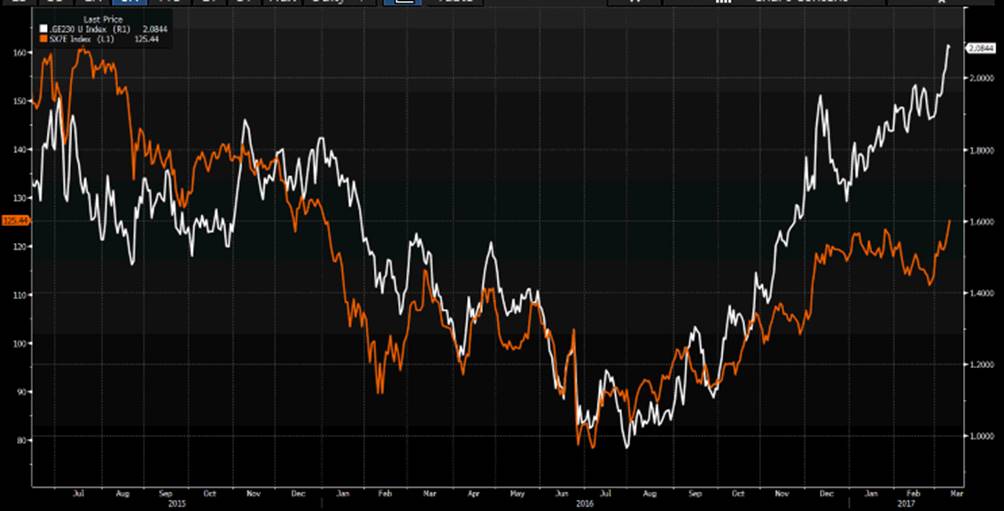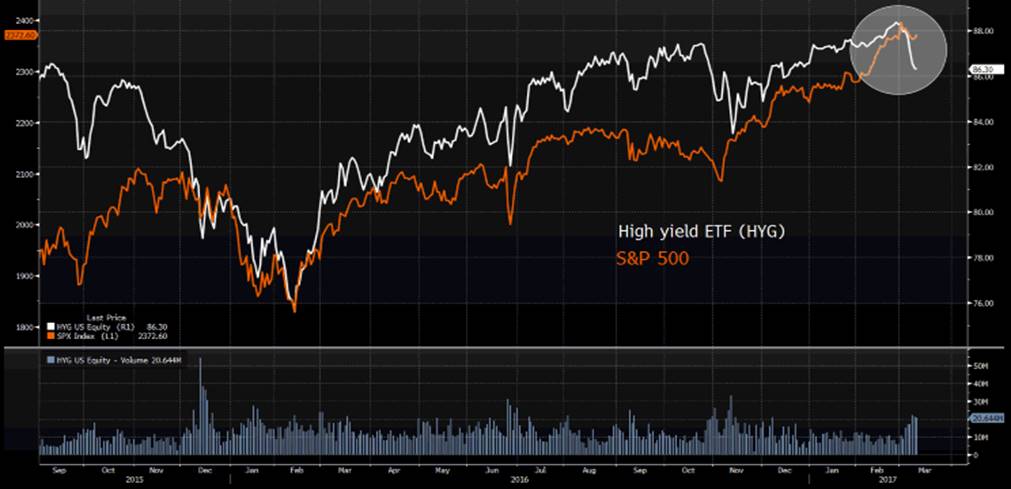It certainly promises to be a big week from a macroeconomic perspective and there really is something for everyone, be it economic data, political risks or potential central bank action.
The highlight of the week is naturally Thursday’s (at 05:00 AEDT) FOMC meeting, where a very commendable non-farm payrolls report (238,000 jobs created in February) has removed any element of doubt that the Fed will hike rates this week. There should also be some real colour on Obamacare legislation, while the U.S. debt ceiling suspension expires mid-week and this could get some focus, as will the Trump administration who are set to release its budget proposals for the 2018 fiscal year.
We get the Dutch elections on Wednesday, but we are unlikely to get any clarity on the outcome due to Holland’s proportional representation system and there may be a messy process of trying to cobble a government together. A negative outcome for markets seems unlikely as anti-EU candidate Geert Wilders will struggle to form any sort of alliance.
Perhaps the other focal point will be whether the UK pulls the trigger on Article 50 on Tuesday as speculated, while there are rising tensions between Holland and Turkey and we shall watch to see if this in any way becomes a markets story.
Investors will also be watching China industrial production (among other data points) and central bank meetings from the Bank of Japan and Bank of England. Locally, the big economic data release is Thursday’s February employment report (consensus 16,500 jobs), although we have our own political stories in the minds of investors with Labor now favourites to take the next Australian Federal election, with bookies paying $1.60 relative to the Liberals on $2.25. Obviously, there is a lot of water to flow under this bridge and there will no doubt be a number of twists to this story.
So the scene is set for a big week, but will it drive an increase in volatility? I am still happy to be a seller of volatility on any spikes, although I am cognisant that high yield credit spreads are widening (a big negative for equities). We saw a sizeable $1.3 billion outflow last week out of the S&P 500 ETF (Exchange Traded Fund) and commodities, such as oil and iron ore, are heading lower and this could have a strong impact on markets and economic expectations.
All the while we can see financial conditions tightening as short-term interest and money market rates are headed higher as investors and traders alike sense tightening from the Federal Reserve this week and price a 58% probability of another hike in June. Here in Australia, the market is now pricing in 19 basis points of hikes over 12 months – the most since November 2013. In Europe, and perhaps most interestingly, there has been a huge steepening of the fixed income yield curve, where we can see the yield spread between 30-year German bunds over two-year bunds increasing to 2.08% (see Bloomberg chart below), from 0.96% in July.
Headlines on Friday caused the EUR to rally with talk that the European Central Bank are discussing whether interest rates can rise before its bond-buying program ends. The market now feels they could hike in early 2018.

This is not just a U.S., Australian and European issue, it is more widespread, but the point is the investment landscape is changing from one where extremely accommodative central bank support is now replaced by a perception of tighter monetary policy and what the ramifications of these actions could mean. We can already see mortgage rates in the U.S. are moving higher and this will be the case in Australia too, but I do think it is imperative to watch credit spreads from here. In times like this equities ALWAYS follow credit.

For now though, we are staring at a positive, albeit quiet (Labour Day holiday in Victoria) open in Australia feeding off the 0.3% gain in the S&P 500 on Friday. Be aware futures markets open at 09:00 AEDT now, but as it stands our opening call for the ASX 200 sits at 5780 (+0.4%), so we should see a slight extension of the 0.8% rally the index etched out last week and again the big target for the week is to test and close above the January and February double top at 5830. That would be a significant development and show the bulls have wrestled back control in a big way.
In terms of influence, BHP’s ADR (American Depository Receipt) suggests a flat open, although oil closed 1.6% lower at $48.49 (extended to a five-day losing streak. Elsewhere spot iron ore was largely unchanged, however, iron ore, steel and coking coal futures closed down 2.1%, 1.1% and 2% respectively. Banks could find buying easier to come by, but the real trade, if you want bank exposure right now is to be long European banks as they are flying.
